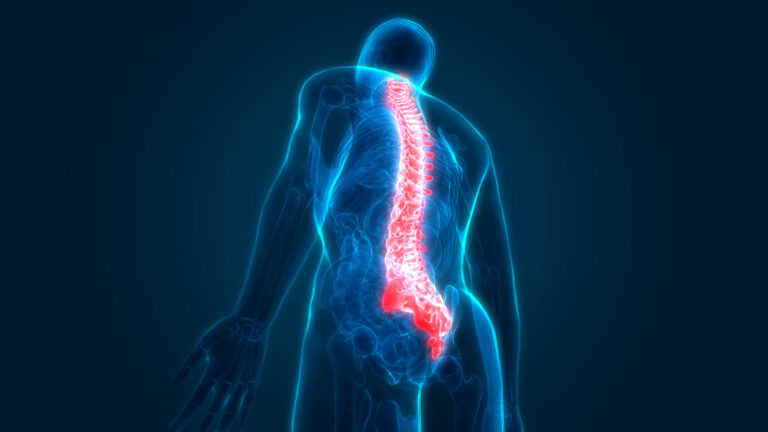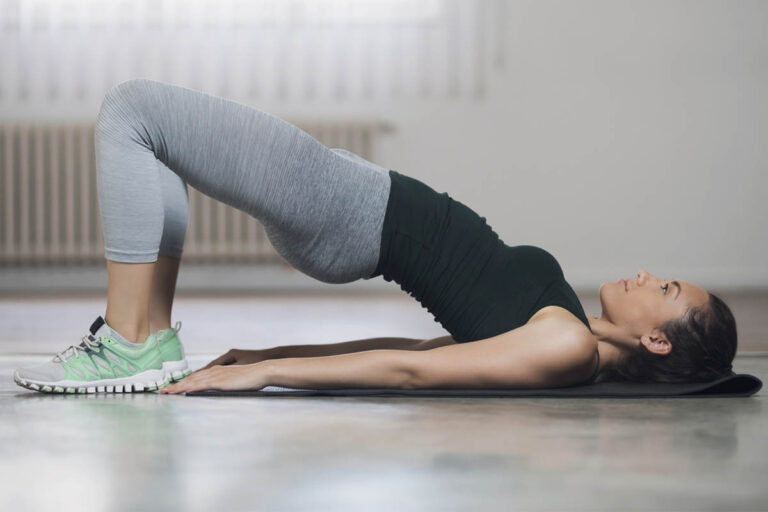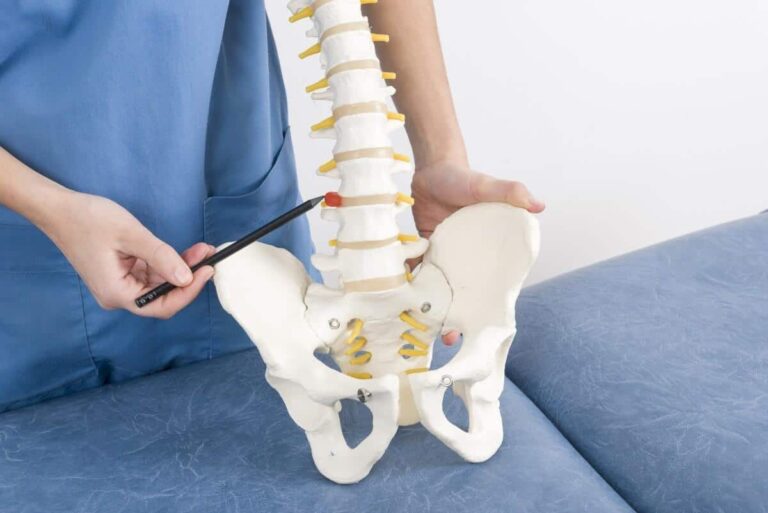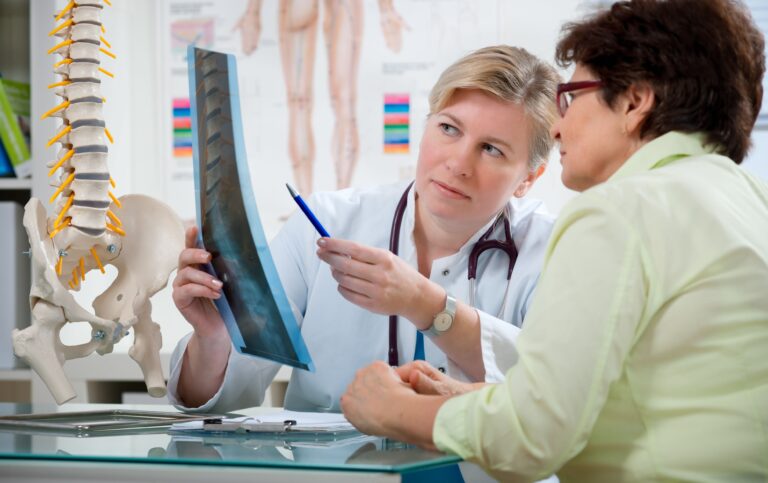Human spines are naturally curved, but an excess of curvature leads to issues. The bend in the lower region of the spine can lead to hyper-lordosis, which is the internal bend. This condition is likewise called swayback or saddleback. Hyper-lordosis can happen in all ages, yet it’s intriguing in kids. It’s a reversible condition. While a slight arch is common, an extreme bend of the lower spine could prompt lower back agony and deadness.

Hyper-lordosis makes an excessive and characteristic C-molded bend in the lumbar area. The lordosis refers to the normal internal bend of the spine, whereas hyper-lordosis refers to an extreme curvature of the lower back. While some arch is normal, an excessive amount may cause agony and distress.
The spine comprises of three bent sections:
- The cervical spine, or neck
- The thoracic spine, or chest
- The lumbar spine, or lower back
REASONS FOR HYPER-LORDOSIS
The most common cause of hyper-lordosis is bad posture. But, many factors may contribute to hyper-lordosis. Some of these may include:
- Spinal Condition: It can be caused due to various spinal conditions such as achondroplasia and spondylolisthesis.
- Bad Posture or Slouching: Slouching can cause the muscles in the lumbar region to tighten. These muscles help to stabilize and support the spinal column. Hyper-lordosis can pull the spine slowly out of alignment, causing an increased curving of the spine.
- Obesity: The presence of excessive fat in the buttocks and abdomen puts excessive strain on the lower back.
- Lack of exercise: Absence of activity can weaken the muscles that lounge around the storage compartment and pelvis. Weakened muscles are less ready to support the spinal section, permitting the spine to bend unreasonably.

Some of the other medical conditions and lifestyle changes leading to hyper-lordosis include:
- Wearing high-obeyed shoes for expanded periods
- Spinal injury
- Rickets
- Sitting or representing expanded periods
- Feeble muscles
- Achondroplasia (dwarfism)
- Pregnancy
- Spondylolisthesis
- Kyphosis
Most cases of hyper-lordosis are mild, and your back stays adaptable. If the curve in your back is firm and doesn’t disappear when you incline forward, there might be a more significant issue.
SIGNS AND SYMPTOMS OF HYPER-LORDOSIS
On the off chance that you have hyper-lordosis, the distorted bend of your spine will make your stomach push forward and your base push out. From the side, the internal bend of your spine will look angled, similar to the letter C. You can see the angled C assuming you take a gander at your profile in a full-length reflection.

An individual with hyper-lordosis might encounter the accompanying indicators:
- Lower back pain: People with hyper-lordosis might encounter gentle to serious lower back torment, which might deteriorate with development. They may likewise insight back spasms or tightness in the back.
- Trouble moving: People might have movement issues because of muscle fixing and firmness in the lower back.
- Numbness: Apart from pain, a few people might feel a tingling sensation.
- Loss of bladder control: An individual might encounter changes in bladder control.
WHEN TO SEE A DOCTOR FOR HYPER-LORDOSIS
Most cases of hyper-lordosis may not require special medical assistance. You can address your stance all alone. You’ll have to do a few normal activities and stretches to help keep up a great stance.
If you have pain or your hyper-lordosis is unbending, see a specialist to decide the reason. Depending upon the conclusion, your doctor might suggest a back specialist or physical therapist. Once in a while, hyper-lordosis can be an indication of a squeezed nerve, deficiency of bone in the spine, or a harmed circle.
Your doctor will do a physical assessment. They’ll ask you when your pain aggravates and how it affects you daily. Your doctor may likewise take X-ray or other imaging tests of your spine to help with analysis. You may also require a neurological test and different tests.
TREATMENT AVAILABLE FOR HYPER-LORDOSIS
The treatment plan depends on the diagnosis by the specialist. Mostly, the treatment for hyper-lordosis is conservative and surgery is rarely required. Treatment involves methods to prevent the worsening of the curve in the lower back.
Where obesity might be a contributing factor, a doctor will devise a weight-reduction plan. This might include physical therapy that stretches and reinforces core muscles to further develop pose. In some cases, a specialist might recommend utilizing a hyper-lordosis back support to assist with keeping the spine aligned.

Longer-term treatment will depend upon the reason for the condition. Hyper-lordosis leads to shortcoming or muscle imbalance. In more extreme cases, where other treatment choices don’t improve symptoms, you might expect a medical procedure to assist with adjusting the bend.
Conservative Treatment involves over-the-counter remedies for pain, like acetaminophen (Tylenol), ibuprofen (Advil, Motrin), or naproxen (Aleve), and physical therapy.
Most cases of hyper-lordosis result from poor posture. Correcting the posture will help resolve the problem. The initial step is to be aware of your posture during your normal daily routine. You will notice the results right away, even if it seems awkward at first.
CHIROPRACTIC CARE FOR HYPER-LORDOSIS
Your chiropractor will utilize the spinal change by right subluxations, and yet again adjust the vertebrae. Your alignment specialist is equipped for alleviating or killing this issue through exercise and change. The chiropractic adjustments (or spinal control) reduce pain and assist with reestablishing ideal versatility. Yet, except if the condition is adequately serious to require a medical procedure (which ordinarily includes spinal combination), extending explicit recovery practices is the most widely recognized therapy to address hyper-lordosis.
VIEWPOINT
Hyper-lordosis include an extreme, internal curve of the lower back. You can be born with the condition, when it creates in adulthood, it is logical because of the explicit way of life factors. Keeping a moderate weight and standard exercise can help improve posture and lower back pain issues. On the contrary, some activities don’t facilitate the manifestations of hyper-lordosis, so it is ideal to look for specialists.
If you or anyone you know is suffering from low back pain, our expert providers at Specialty Care Clinics will take care of your health and help you recover.
Call us on (469) 545-9983 to book an appointment with our specialists.
